We
arrived in Budapest late on October 22, and October 23, 2006 was the
50th anniversary of the Hungarian Uprising. The Revolution only
lasted a couple of weeks, because Russia came in with troops and
tanks. The symbol of
that uprising was the Hungarian flag with a hole. At that time,
the approved flag had the three colors with a hammer and sickle in the
center. The protesters cut the hammer and sickle out, leaving a
hole, naturally.
This big replica was hanging on the Elisabeth Bridge, a 1903
bridge crossing the Danube River at a fairly narrow point. The
bridge is about 1000 feet long.
|
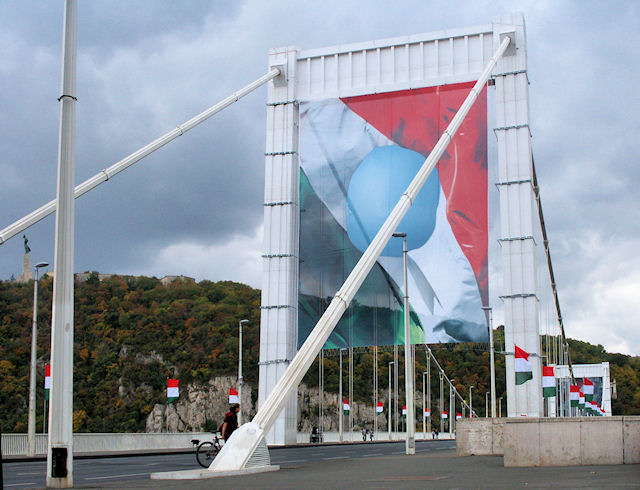
|
Vorsmarty
Square is a social center, with a concert hall on one side, a
pedestrian shopping mall entering the other, and on this end, Cafe
Gerbeaud, a stop in its own right for its coffee and pastries.
|
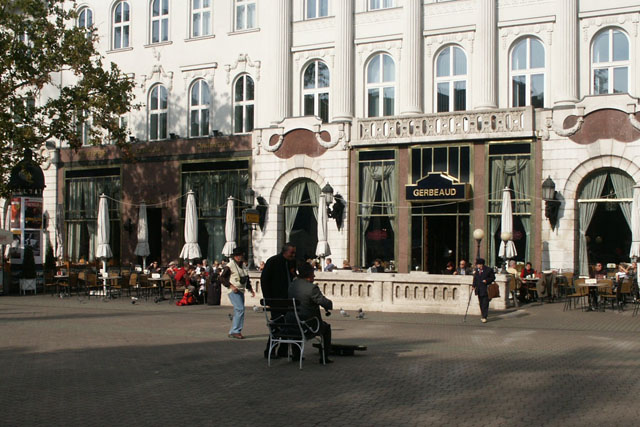
|
And it has ice cream. Who could resist this?
|
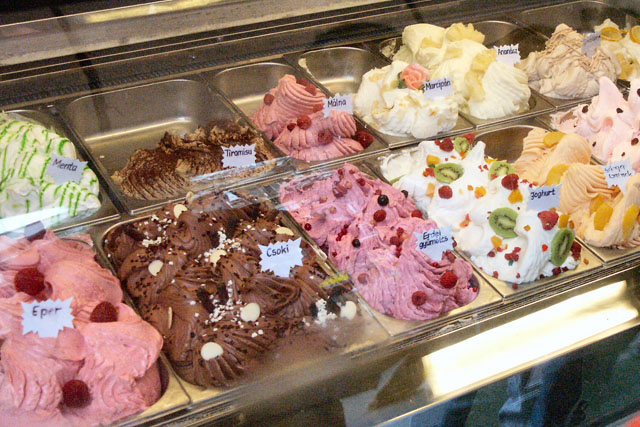
|
Castle
Hill is dominated by Buda Castle. This has been destroyed and
rebuilt frequently. Budapest has found itself on the losing end
of multiple European wars. Buda is the older, hillier part of the
city, on the west bank of the Danube.
|
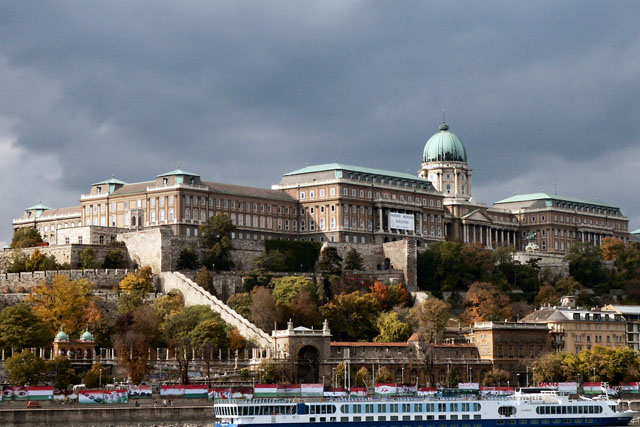
|
This facade of Buda Castle faces away from the river.
|
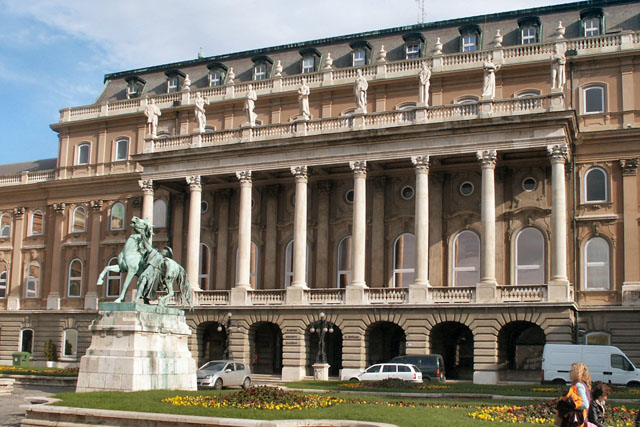
|
This is the Matthias Fountain, just to the left of the West Forecourt above. It represents a hunting scene.
This fountain was sculpted in 1904, during the Hapsburg era. It
has survived the destruction of both World War I and World War II.
|
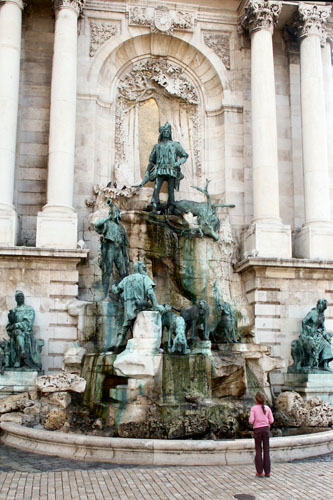
|
Matthias
Church, about 700 years old, is just adjacent to the Buda Castle.
The statue in the foreground is King Steven I, founder of Hungary.
|
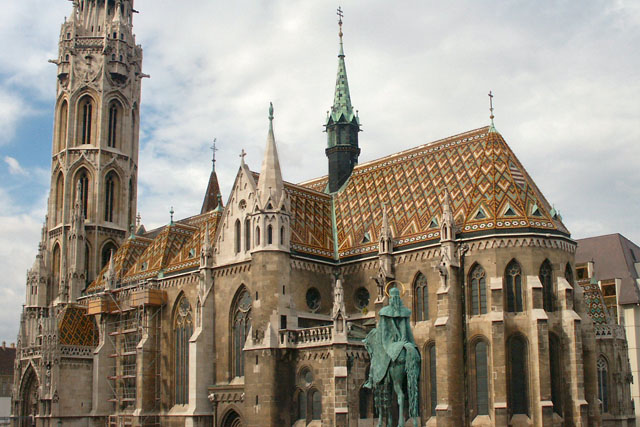
|
The altar of Matthias Church.
|
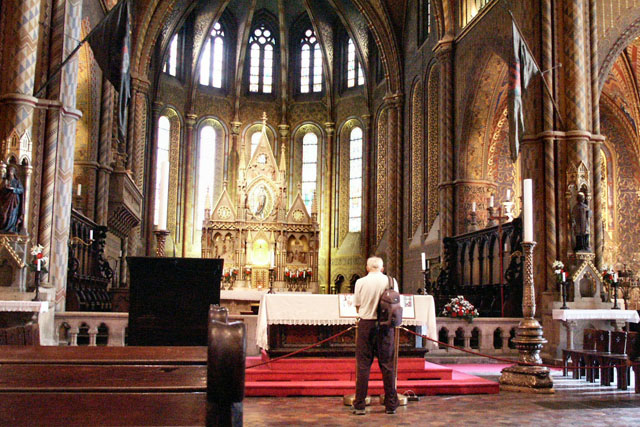
|
Fisherman's
Bastion, high on the hill overlooking the Danube. This is between
Matthias Church and the drop-off going down to the river. This
structure celebrates a fishermen's guild that was responsible for a
stretch of the city wall. It has seven towers for the seven
original Magyar tribes that settled Budpest.
|
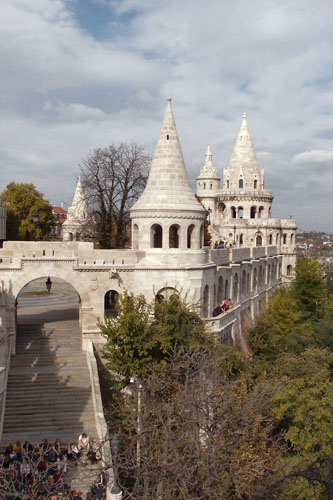
|
Looking
north from the Fisherman's Bastion, we see the Chain Bridge and the
Hungarian Parliament building. The Chain Bridge, built over ten
years between 1839 and 1849, was the first to connect the cities of
Buda and Pest.
|
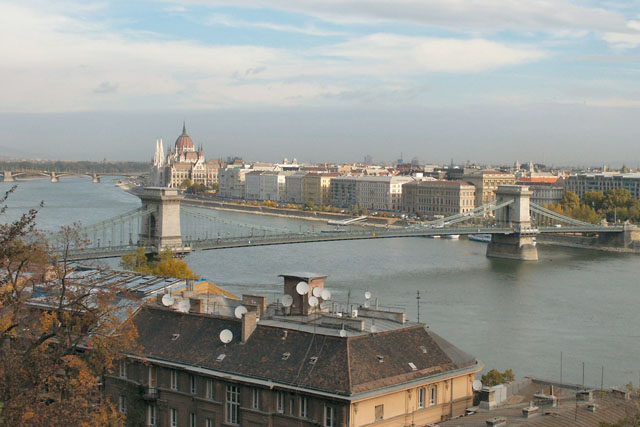
|
The
Hungarian Parliament building seen from the Pest side of the Danube,
with the hills of North Buda in the background. This view is
actually from the dome of St. Steven's Basilica.
|
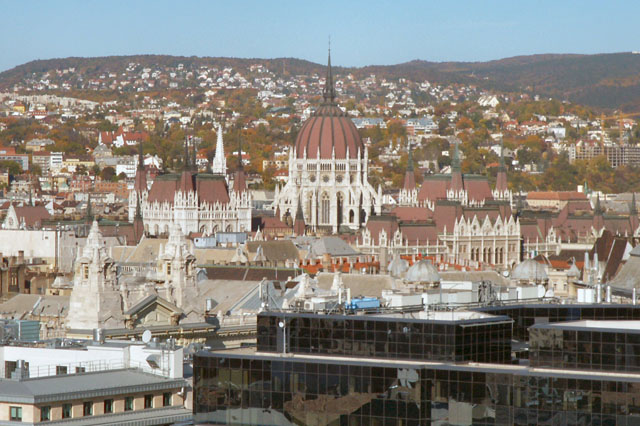
|
The
Hungarian Parliament, as seen from the Danube. This is a Gothic
Revival structure, which was completed in 1904. It bears an
uncanny resemblance to Westminster Palace in London.
You can see renovation to the right. Apparently, some part of this building is always under renovation.
|
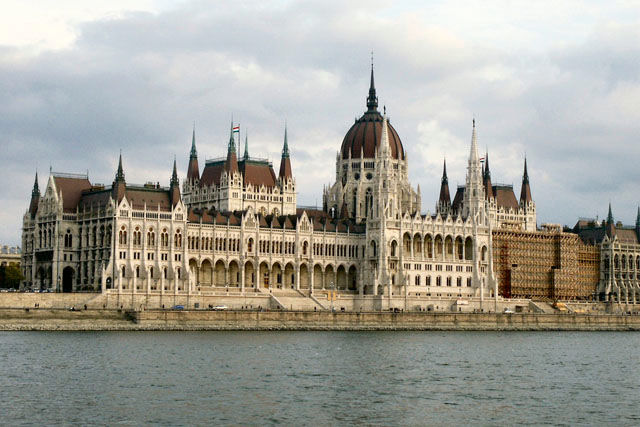
|
This
is the entrance to the Parliament building. Guards were a little
more obvious because of the 50th anniversary of the Hungarian
Revolution.
Extra security seems to have been justified. The night of October
23 had crowds marching up and down the streets where the Revolution had
taken place in 1956. Riot police were out using tear gas.
Our hotel strongly recommended not walking that direction, because that
action was about a block and a half away.
|
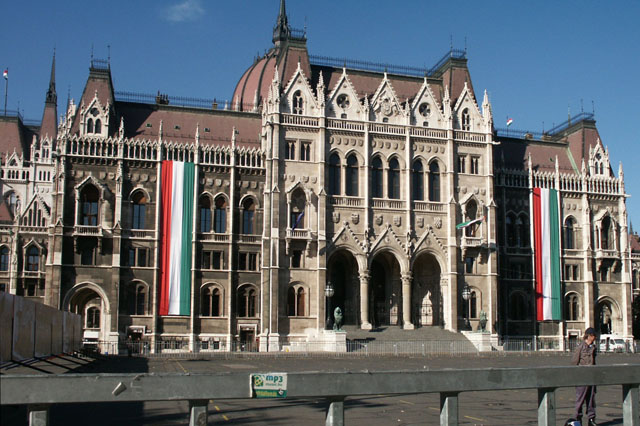
|
Margit
Island, which apparently was once known as Rabbit Island, is sort of a
Central Park for Budapest. Here Janet props up some boulders.
|
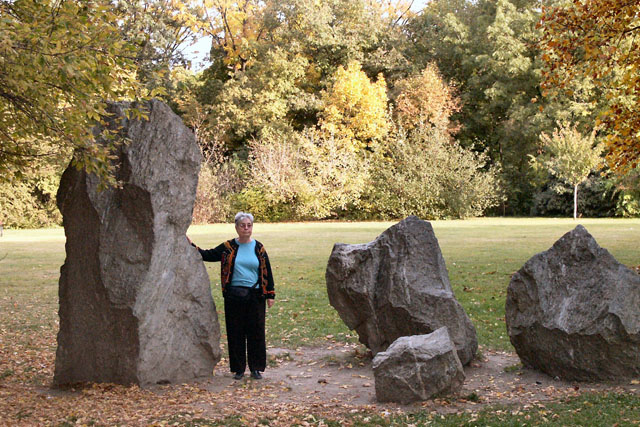
|
Margit
Island was filled with churches and nunneries, including the Dominican
Convent of St. Margaret, these ruins shown here. When the
Ottomans moved into Budapest, they made sure that all the religious
buildings were knocked down. Margaret was a daughter of one of
the Hungarian rulers, Bela IV. I don't know if she was there
willingly or Russian style, as an alternative to assassination or exile.
|
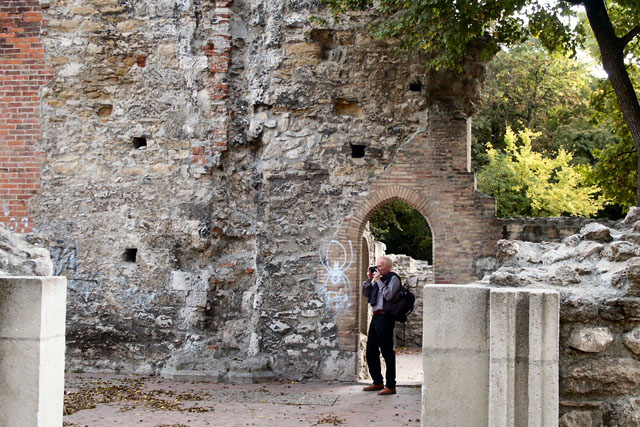
|
St.
Steven's Basilica is on the Pest side of town. It is named after
the first king of Hungary, Steven I, who ruled from 1001 until
1038. This church was completed in 1904, after 54 years of
work. There was a huge "OOPS" in 1868, when the dome collapsed,
and they had to start over.
|
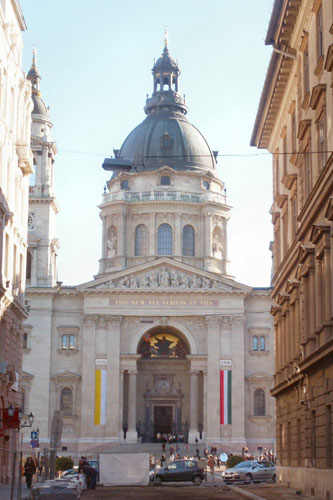
|
The dome. Still in place, this time.
|
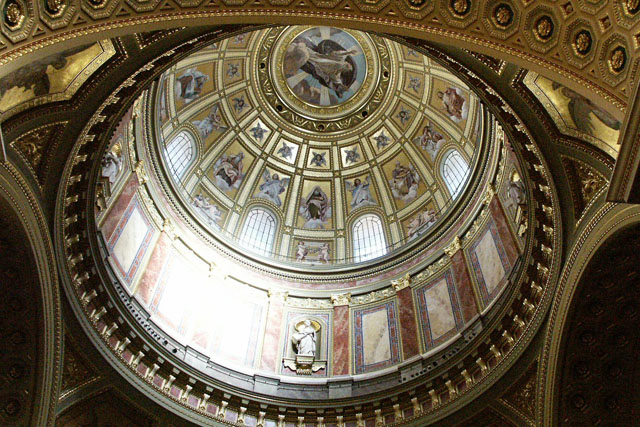
|
The altar of St. Steven's Basilica.
|
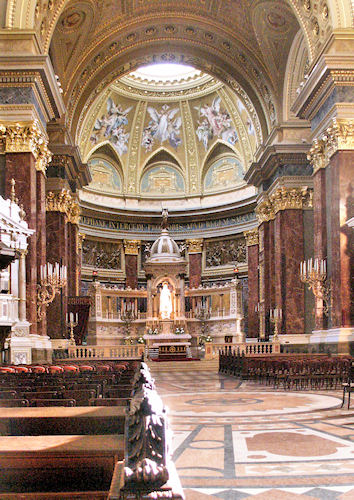
|
While
most of the notable architecture in Budapest dates to the Hapsburgs and
the era of the Austro-Hungarian Empire, there is some new architecture,
too. This building houses the Ludwig Museum of Contemporary
Art. This was one of our favorite stops in Budapest. In
part, because the art was lively and new, in contrast to the centuries
old icons we had been seeing in Russia. Another feature was
self-cleaning toilets that could have been designed by Rube Goldberg.
|
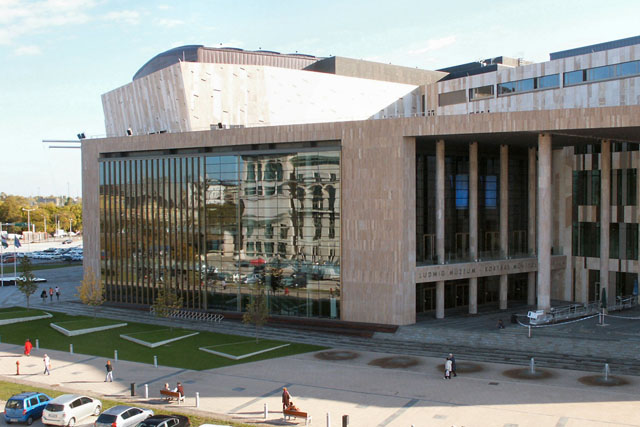
|
The
Pest end of the Chain Bridge brings you to the Hungarian Academy of
Sciences. It was founded in 1825, but its buildings date to
around 1865. Those Hapsburgs at work again.
|
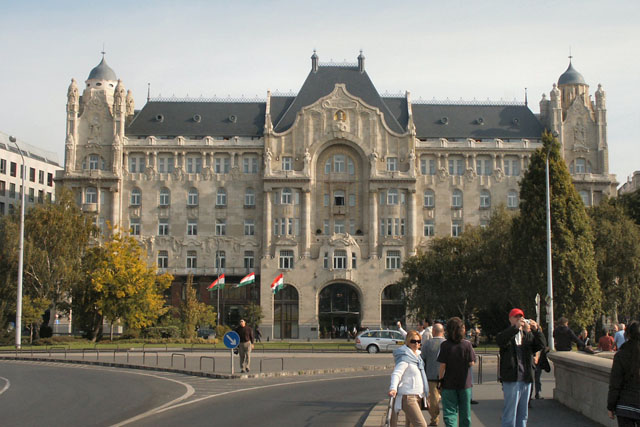
|
This
statue of Imre Nagy stands in Martyr's Square, very near the
Parliament. Nagy was Prime Minister of Hungary twice. The
second time was most notable, because he was selected as PM by acclaim
after the 1956 Revolution. A week after the Revolution, he
announced Hungary's withdrawal from the Warsaw Pact. When the
Russians re-invaded the country, Nagy was sheltered briefly in the
Yugoslav Embassy. The Russians, ignoring their promise of safe
passage, captured him and executed him in secret.
| 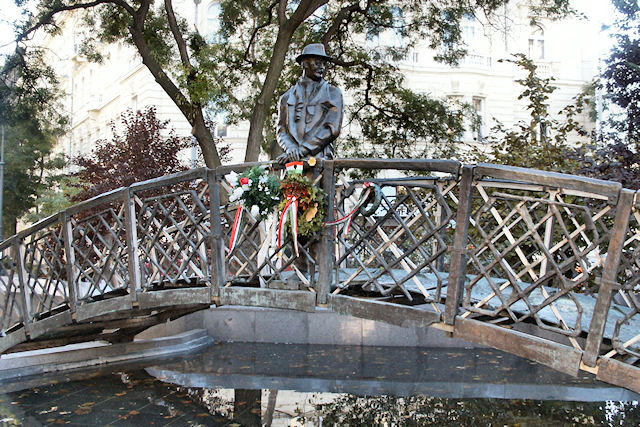
|



















